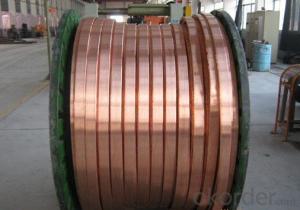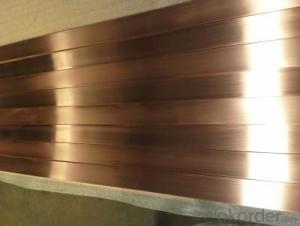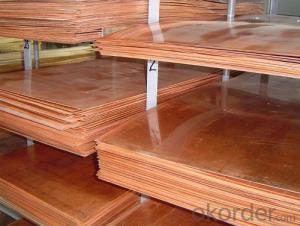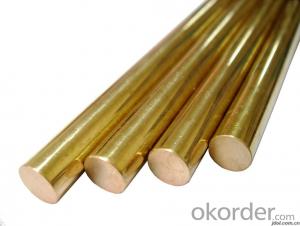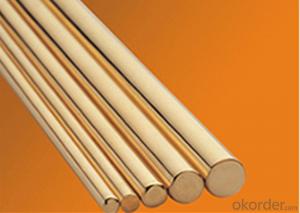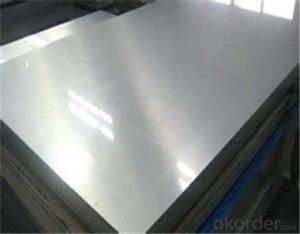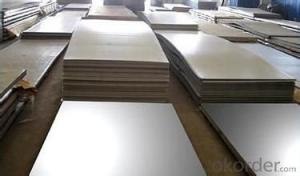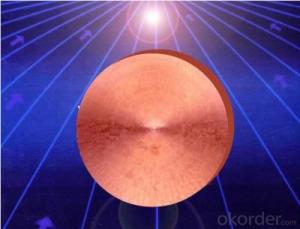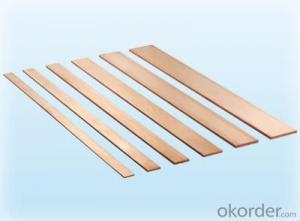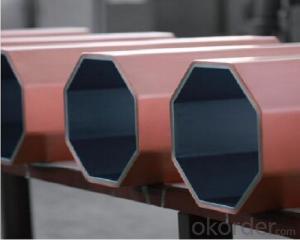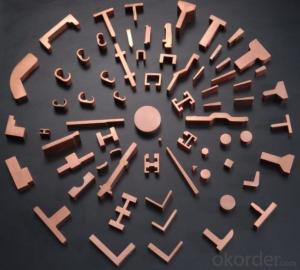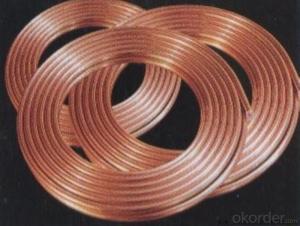Oxygen-free Copper Busbar With High Conductivity
- Loading Port:
- Shanghai
- Payment Terms:
- TT OR LC
- Min Order Qty:
- 500 kg
- Supply Capability:
- 10000 kg/month
OKorder Service Pledge
OKorder Financial Service
You Might Also Like
Product: Oxygen-free copper busbar and copper bar with high conductivity
Brand: Flying Wheel
Type Specifications: T2, TU1, TU2, TAg
Copper busbar is a strip or bar of copper that conducts electricity, often produced with high purity oxygen-free copper ingot through extrusion and drawing processes, usually used in high and low voltage electrical equipment, switch contact, electrical distribution equipment, and bus slot, etc.
Oxygen-free copper busbar and copper bar with high conductivity Specifications
Type | Cu%(WT) | W%(WT) | RWMA | Density | E-conductivity(Min) | heat conduction | thermal expensivity | |
Class | (Min) | Hardness | ((W/mK)) | |||||
(Min) | ||||||||
CuW55 | 45±2 | Balance | 10 | 12.30g/cm3 | 49%IACS | 125HB | ~260 | ~11.7(10-6/K) |
CuW60 | 40±2 | Balance | 12.75g/cm3 | 47%IACS | 140HB | |||
CuW65 | 35±2 | Balance | 3.30g/cm3 | 44%IACS | 155HB | |||
CuW70 | 30±2 | Balance | 13.80g/cm3 | 42%IACS | 175HB | ~240 | ~9.7(10-6/K) | |
CuW75 | 25±2 | Balance | 11 | 14.50g/cm3 | 38%IACS | 195HB | 200~230 | 9.0~9.5 (10-6/K) |
CuW80 | 20±2 | Balance | 12 | 15.15g/cm3 | 34%IACS | 220HB | 190~210 | 8.0~8.5 (10-6/K) |
CuW85 | 15±2 | Balance | 15.90g/cm3 | 30%IACS | 240HB | 180~200 | 7.0~7.5(10-6/K) |
Application: Copper busbar is a strip or bar of copper that conducts electricity, often produced with high purity oxygen-free copper ingot through extrusion and drawing processes, usually used in high and low voltage electrical equipment, switch contact, electrical distribution equipment, and bus slot, etc.
Production Equipment
750-1500kg main frequency induction copper melting furnace, 80MN water seal extruder, LG60 high speed two-roll cold pilger mill, straight-line wire-drawing machine, copper tube/pipe straightener, polisher, 84′ copper coil winding machine, straightening-cutting & pancake coiling machine, thermoplastic packaging machine, 1.2T continuous bright annealing furnace.

80MN extruder

Continuous bright annealing furnace
Testing Devices
spectrum analyzer, atomic absorption analyzer, spectrophotometry, analytical balances, metallurgical microscope, eddy current flaw detector, metal tensile testing machine, eddy conductivity instrument.

Hardness tester

Spectrum analyzer

Metallurgical microscope

Metal tensile testing machine

Atomic absorption analyzer
Process
refined copper — smelting & casting — extrusion — rolling — drawing — straightening-cutting/forming of pancake coil — bright annealing — packaging — finished goods.
Standards
GB/T 1527-2006 Drawn tube of copper and copper alloys
GB/T 16866-2006 Dimensions and tolerances of copper and copper alloy seamless tubes
GB/T 4423-2007 Copper and copper-alloy cold-drawn rod and bar
GB/T 5231-2001 Wrought copper and copper alloys chemical composition limits and forms of wrought products
GB/T 5585.1-2005 Copper or aluminium and its alloy bus bars for electrical purposes—Part 1:Copper andcopper alloy bus bars
GB/T 17791-2007 Seamless copper tube for air conditioner and refrigeration equipment
GB/T 19850-2005 The seamless round copper tubes for electrical purposes
GB/T 26024-2010 Seamless copper and copper alloys tube for valves on air-conditioning and refrigeration system
ASTM B280-2008 Standard Specification for Seamless Copper Tube for Air Conditioning and Refrigeration Field Service
EN 12735-1:2001 Copper and copper alloys Seamless,round copper tubes for air-conditioning and refrigeration Part 1:Tubes for piping systems
EN 12735-2:2001 Copper and copper alloy – seamless round copper tube/pipe for air-conditioning and refrigeration system – for equipment
JIS H3300-2009 Seamless copper and copper alloy tube/pipe
- Q:How can i remove the copper from a penny without using a metal file to grind it away cause that is taking too long. Can i remove the copper with household items?
- WTF..Just leave the currency alone..You cannot deface government property..Find a new hobby.
- Q:I have a copper cover that goes on top of a computer mouse and has some corrosion. I'm wondering if the corroded area is poisonous hazard to my health.
- I think copper does form toxic compounds so you should be careful.
- Q:Is this video fake or do I just suck at science?
- The magnet moving near the copper causes a force that acts as a brake, slowing its natural motion down the pipe due to gravity. Where does the force come from? Electric currents and magnetic fields are closely related. If you have one, you often have (or can make) the other. The braking force in the demonstration is due to an eddy current. That's an electrical current that forms in the copper, in response to the moving magnetic field of the falling neodymium magnet. That eddy current produces a magnetic field of its own. The two magnetic fields overlap and slow the fall of the magnet.
- Q:In science we got a blue ish powder that we know is copper... How can I prove that....I kneed two.... I said it was blue and that it needs two valence electron.... Is that good..... I still want one more option
- Well copper is a pinkish brown metal, not a blue powder. Perhaps you think you have copper sulphate, which is blue You should do a flame test, the colour will determine the presence of copper. Copper does form 2+ ions, but that isn't a test, it is a fact about copper. How do you know the mystery blue power has 2+ions, and even if you had shown this, it wouldn't prove copper, as many other metals have the same. Blue is also not a test, there are other blue substances. the test for sulphate is barium chloride, i think.
- Q:I have a small leak under the bath at the hot water copper pipe. It is small but I do not like to leaveit as in first floor flat. A plummer came and said he had hoped he had fixed it and that it was verydifficult to get at. However it is still a small leak. Would the bath have to be taken out to fix it orsomething big like that, which I would not want of course. The bathroom basin is very near the bathso that makes it harder to get at the pipe maybe. Am I going to have a big problem here. Any plummers to advise me please. Most grateful. Thanks so much. I live in Shefford Bedfordshire. Is there a brillant plummer there or joke a very slim one who is agile and can slide under a difficultarea e.g. my difficult to get at pipes under bath.
- did you install it right? did you disconnect the battery to reset the comp?
- Q:Line of fire water in unit 140 of phases of gas 1516 in iran use a copper pipe
- You don't say where you live. Hostas need shade and cooler temperatures(don't do well in phoenix) Petunias also are not good for heat tolerant. They do need sun but not full sun someplace like phoenix.
- Q:GREE air conditioner in connection with copper to test machine
- Can not try; not even copper tubes, air-conditioning can not function properly, only the internal fan rotation, can not test whether the refrigeration;
- Q:1. Would the conductivity of copper be a physical or chemical property?2. What are some physical properties of copper?3. What are some chemical properties of copper?
- copper is a mineral it forms naturally in the earth. it's in the earths crust as an elementle form. it is a mineral found in deposits called ores.an ore is a mineral rich rock. they form during sedimentary,igneous, or metamorpic rock cycle changes. they are literal veins in the earth when hot underground water magma is cooled some ores are formed settled and hardened into mineral. thats how you get the physical property. the chemical property of copper is mined and made into copper wire, like alluminum, coal and oil. they are all natural resources made into everyday materials from the enviroment
- Q:i am taking a design course in pipework and sanitary and now we are taking a section where we need to design pipe sizes by estimating their diameters , so we have a table one for steel and the other is for copper pipes, the complicated things comes in when we want to choose the diameter for the pipe depending on the flow rate demanded by consumers note:- (all cold water supply)to illustrate more-further a good example of that is when we want to design a pipe diameter for a copper pipe that is connected to a bath demanding a flow of 0.9 l/s i get stuck here there is so many options to take from the tables !!the teacher is unclear and have no specific criteria about how to choose the most fitting pipe diameter !!so what to do ?? please i need help in this one
- calculator: irrigation.wsu.edu/Content/Calcul.
- Q:A slab of copper of thickness b = 1.167 mm is thrust into a parallel-plate capacitor of C = 7.00×10-11 F of gap d = 7.0 mm, as shown in the figure; it is centered exactly halfway between the plates.If a charge q = 4.00×10-6 C is maintained on the plates, what is the ratio of the stored energy before to that after the slab is inserted?How much work is done on the slab as it is inserted?
- Unfortunately the mentioned figure seems to be absent but, strangely, I like the problem so let's see what I can do without the figure. By the way, engineers could do a little for their dull image by simply saying please if they want a favour. A slab of copper has even less charm and excitement than a refrigerator! The capacitance C ∝ A/d where A is the area of the plates and d the distance between them. ∝ is the proportionality sign. The initial stored energy in a capacitor = E = ?.C?.V?? In this case the initial voltage V? on the capacitor = Q/C? = 4×10??/(7×10???) = 57,143 volts. In this case, the initial energy = E? = ?×7×10??? ×(57143)? = 0.1143 J. By insertion of the copper plate the capacitance increases to C? = C?×7/5.833 = 8.4×10??? Farad At constant Q the voltage then reduces to Q/C?= 47,619 volts and the stored energy to E? = ?×8.4×10???×(47,619)? = 0.0952 J Ratio E?/E? = 1.20 Work done by the field on the copper = 0.1143 – 0.0952 = 0.019 J.
1. Manufacturer Overview |
|
|---|---|
| Location | |
| Year Established | |
| Annual Output Value | |
| Main Markets | |
| Company Certifications | |
2. Manufacturer Certificates |
|
|---|---|
| a) Certification Name | |
| Range | |
| Reference | |
| Validity Period | |
3. Manufacturer Capability |
|
|---|---|
| a)Trade Capacity | |
| Nearest Port | |
| Export Percentage | |
| No.of Employees in Trade Department | |
| Language Spoken: | |
| b)Factory Information | |
| Factory Size: | |
| No. of Production Lines | |
| Contract Manufacturing | |
| Product Price Range | |
Send your message to us
Oxygen-free Copper Busbar With High Conductivity
- Loading Port:
- Shanghai
- Payment Terms:
- TT OR LC
- Min Order Qty:
- 500 kg
- Supply Capability:
- 10000 kg/month
OKorder Service Pledge
OKorder Financial Service
Similar products
New products
Hot products
Related keywords
